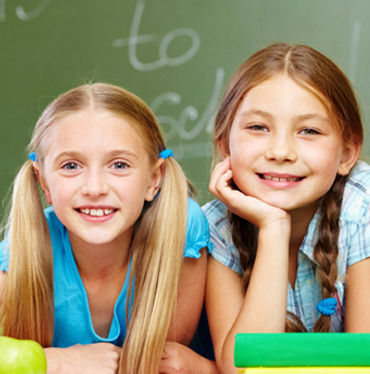
LEARN, LOVE, LAUGH
Empowering ALL Girls

LEARNING OUTCOMES
LEARN, LOVE, LAUGH has strong links with the Victorian curriculum framework - AusVELS (VCAA, 2013).
This program covers the AusVELS learning outcomes from Health and Physical Education, Interpersonal Development and Personal Learning for Years 4 to 8.
1. LEARN to be healthy
-
Students consider what it means to be physically, socially and emotionally healthy. They explore their own and others' views about health and suggest what it might mean for certain groups of people. Health and Physical Education Level 5, 6
-
Students consider factors that affect their own and others' ability to access and effectively use health information, products and services. Health and Physical Education Level 5, 6
-
They discuss and develop strategies and clarify a cohesive set of personal values for improving their personal health. Health and Physical Education Level 5, 6, 7, 8
-
In developing strategies to minimise harm and to protect their own and others' health, students consider health resources, products and services, and the influences of the law, public health programs, their conscience, community attitudes, and religious beliefs. Health and Physical Education level 7, 8
2. LOVE your self
-
Students begin to explore how their emotions are affected by the way they view themselves, identifying factors (including the influence of peers and family) that affect, positively or negatively, their sense of identity and self-worth. Health and Physical Education Level 4
-
They learn skills for maintaining and supporting their self-worth. Health and Physical Education Level 4
-
They consider the various ways that people view each other on the basis of characteristics such as gender, race and religion, as well as qualities such as needs, abilities and aspirations. They discuss the validity, advantages and disadvantages of such classifications. Health and Physical Education Level 5,
-
Students are encouraged to think about their values and how these affect their feelings and behaviour. Interpersonal Development Level 4, 5, 6
-
They develop an awareness of their emotions and the capacity to use positive self-talk; for example, by compiling a list of strategies they can implement when they are feeling uncertain. Personal Learning Level 4
-
In selected reflective activities, students explore the impact of various emotions on their learning and they learn to maintain a positive attitude. Personal Learning Level 5, 6
-
They identify and employ strategies for maintaining a positive attitude. Personal Learning Level 7, 8
3. LOVE your body
-
Students develop their understanding of the need for variety and frequency of food intake in active and healthy lives, and begin to relate the foods they eat with the energy they need for everyday and physical activities. Health and Physical Education Level 4
-
They consider the physiological, social, cultural and economic factors that influence food choice, and the impact of these factors on healthy eating. Examples could include: how taste or mood affects food choice; the impact of meeting nutritional requirements for growth and energy; the influence of peers and family on food choice; popular foods in other countries; and the availability of low cost healthy snacks or lunches. Health and Physical Education Level 4
-
Students reflect on the importance of healthy eating and the participation in physical activity for their physical, social and emotional health. Health and Physical Education Level 4
-
Students reflect on the range of influences on personal food intake: peers, advertising, mass media, mood convenience, habit, cultural beliefs and values, and access to food products and services. Health and Physical Education Level 7, 8
-
They explore topical issues related to eating, and identify personal and community factors that influence their own food selection. Health and Physical Education Level 7, 8

LEARN, LOVE, LAUGH comprises of 5 learning areas:
-
LEARN to be healthy
-
LOVE your self
-
LOVE your body
-
LAUGH with others: making friends
-
LAUGH with others: saying no to bullies
AusVELS Health and Physical Education
Learning Focus and Standards for Years 4 to 8 >
AusVELS Interpersonal Development
Learning Focus and Standards for Years 4 to 8 >
AusVELS Personal Learning
Learning Focus and Standards for Years 4 to 8 >
4. LAUGH with others: making friends
-
They identify different types of friendships and relationships. Interpersonal Development Level 4
-
They discuss the expectations they have of friendship and relationship groups and acknowledge the expectations that others have of them. Interpersonal Development Level 4
-
They recognise that relationships change and that positive relationships do not depend on always agreeing with one another. Interpersonal Development Level 4
-
They are supported to develop relationships based on respect and the valuing of individual differences; for example, speaking respectfully about others, listening and responding appropriately and encouraging others' contributions. Interpersonal Development Level 4
-
They learn to respect other students' belongings and, when appropriate, to share their own. Interpersonal Development Level 4
-
They learn about empathy and use this to begin to respond to the needs of others. Interpersonal Development Level 4
-
Students being to recognise and discuss the influence that peers can have on their behaviour and consider response options. Interpersonal Development Level 5, 6
-
They continue to identify strategies to build and maintain positive social relationships; for example, by acknowledging and celebrating the diversity of individuals, recognising peer influence on their own behaviour, showing sensitivity to cultural diversity, recognising and accommodating others' strengths and weaknesses and acknowledging the existence and possible implications of different values and beliefs. Interpersonal Development Level 7, 8
4. LAUGH with others: saying no to bullies
-
Students explore how the school and community contribute to the health of its members, both through the impact of its physical and social environments and through the services and facilities it provides. Examples of facilities and services that contribute to health could include a school environment free of bullying. Health and Physical Education Level 4
-
Students develop an understanding of the right to be safe. They learn to describe and assess the strategies for responding to situations that are potentially unsafe, risky or harmful in a range of settings (at home, at school and in the community). Health and Physical Education Level 5, 6
-
Students are introduced to a variety of strategies for dealing with conflict and bullying By articulating the conflict to be resolved, they discuss options and outcomes and work with others to develop plans and procedures to reduce the possibility of conflict, avoid or resolve conflict. Interpersonal Development Level 4
-
Through discussion and activities such as role-play, they reflect on inclusion, belonging and tolerance. They consider how it feels to be excluded from a group. Interpersonal Development Level 5, 6
-
They identify examples of bullying in a range of contexts. Interpersonal Development Level 5, 6
-
They explore the impact of bullying on people's sense of self-worth and are assisted to identify, discuss and use different strategies to reduce, avoid and resolve bullying. Interpersonal Development Level 5, 6
-
In a variety of forums, students investigate various forms of bullying and the consequences for the bully and the victim. Interpersonal Development Level 7, 8
-
They develop and practise appropriate skills in conflict resolution. Interpersonal Development Level 7, 8